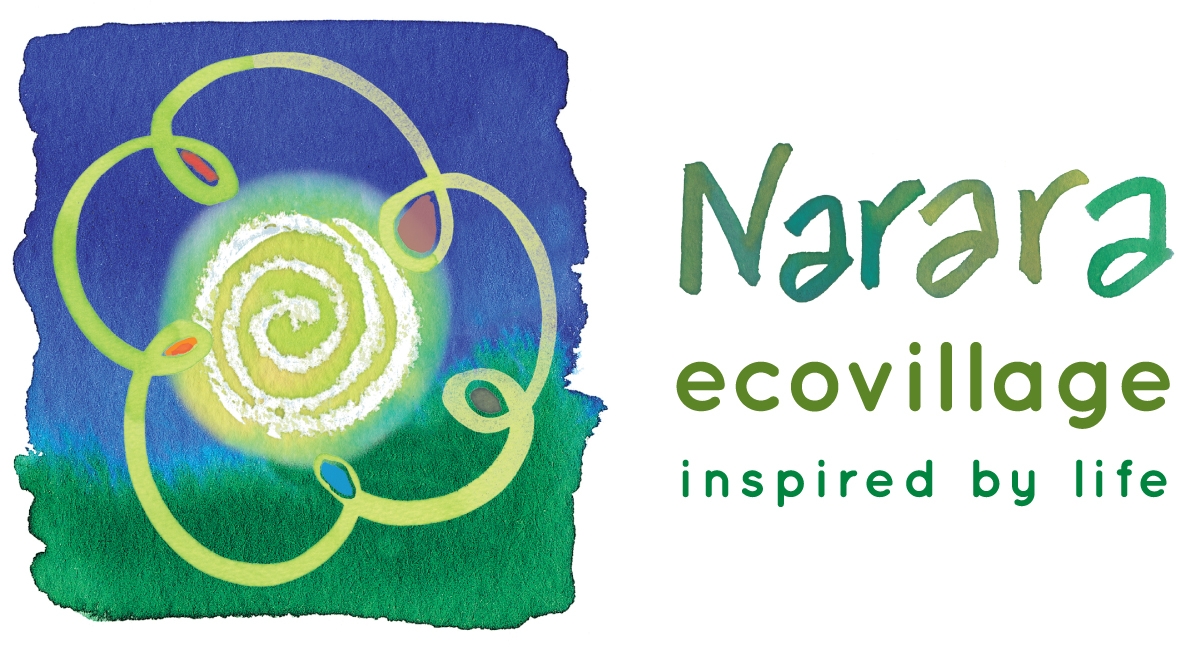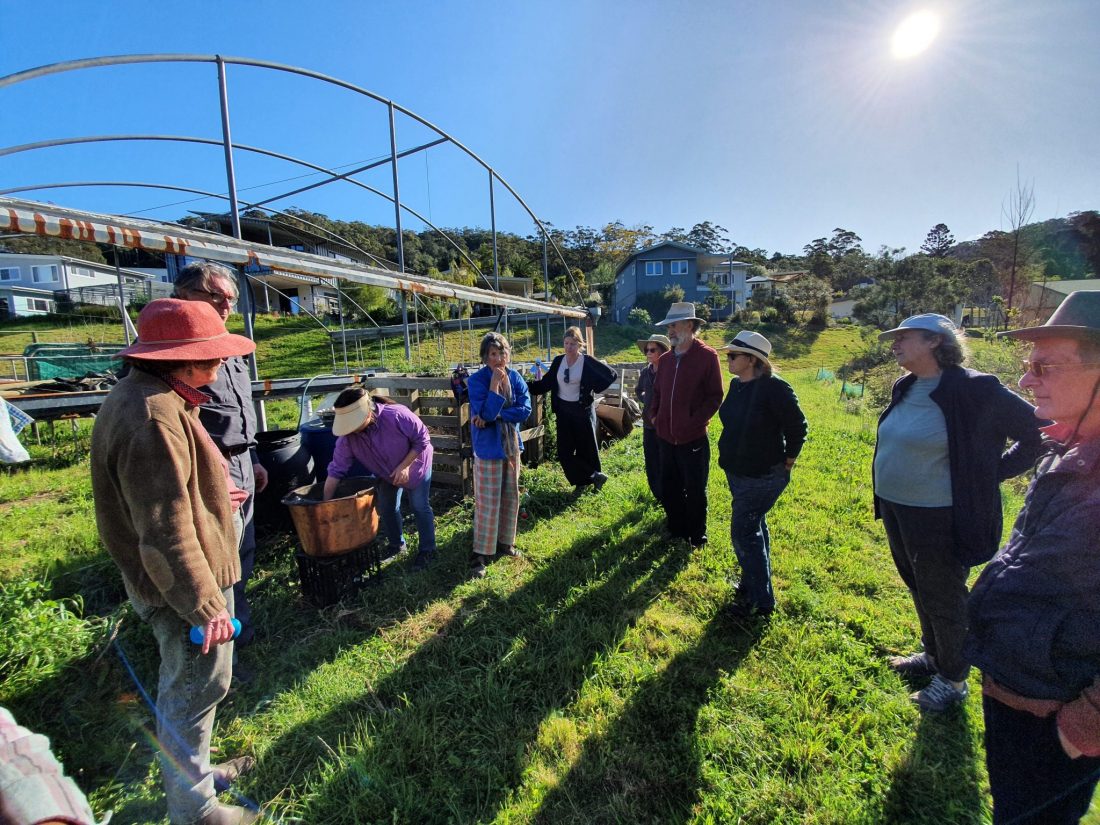By Rafaele Joudry
Last weekend, five members and five visitors spent a wonderful two days learning about Biodynamic compost and other wonders of Biodynamic gardening methods. Teacher Diane Watkin attended despite having an infected leg, but she said the whole experience was so delightful, feeling the gentle welcome and peaceful atmosphere of our community that she felt restored by being here. With many decades of experience to bring to us—it was something like her 120th compost pile!—she was generous in sharing her depth of knowledge. Laurence and Michael, through NEV Ed, were our organisers, with Candy’s delicious local organic slow food catering, and it was all round a relaxing, restorative and enjoyable weekend.
Although I grew up around Steiner ideas and have visited Emerson College with several family members being quite involved in Steiner communities, there were some very new learnings for me. For example, why is the cow so important in Biodynamics? Answer: because it is so calm and contented. It brings this peaceful energy to the farm. Also, having four stomachs, it produces very well processed manure which is ideal for starting the Biodynamic formulae.
The Biodynamic calendar is an astounding document combining elements of astronomy, such as the moon’s distance from the earth, the position of the planets, and on which days it’s best to do nothing in the garden, and which days are best for planting greens, roots, flowers or fruit and seeds. Some of the processes do seem mysterious and a little like magic. But when you hear them described by a knowledgeable practitioner, and as science advances, and we learn more about the incredible detail of the microscopic world and the complexity of wholistic nutrition and ecosystems, its possible to conceive that they may all have a scientific explanation. Even if only half of them do, there is no doubt that biodynamic farming does work.
I watched a fascinating talk the other day from an advocate of Steiner’s work, on the philosophy of science and how it is created and influenced by our socio-cultural system. Here it is if you’d like to spend a thought provoking hour or so. https://www.youtube.com/watch?v=nsH6-n7BUtw
Of course we used the famous Preparation 500, the core of biodynamic preparations, which we mixed in a bucket for an hour with our bare arms — taking turns (it’s good to have a group of 10!) and then scattered reverently around the garden. We also applied emulsions of fish, seaweed, worm tea, weed tea, and other pre-made biodynamic preparations. All were used on a bed we planted in the Triplespan—so it will be very interesting to see how healthy those plants turn out. The top was mulched with straw, which I learned is an ideal mulch as it lets the water through, lets the sun through, lasts for several re-uses and adds silica to the soil. Here’s an article on why silica is important in the garden. https://hydrobuilder.com/learn/silica-for-plants/


We also made a biodynamic compost heap. What an extraordinary invention! Constructing the heap was like making a precisely designed French gateau with many important ingredients, combined in a precise manner following Diane’s expertise. Michael had gathered at least 8 wheelie bins of green and brown matter. But we also added several other key ingredients, including four pre-prepared bio dynamic preparations which had taken months to make. These were inserted into balls of a previous biodynamic compost and used to inoculate the heap to initiate the replication of all the right microbes. The centre of the heap was structured to ensure that it remains aerated throughout the process and doesn’t go sour. This is a two-stage compost process which does not release greenhouse gases (as we do, unfortunately, when we turn our compost). Instead, those gases are reabsorbed during phase two, adding to the nutrient density of the finished product. Also, intentionally included in the heap were …shock horror… plenty of blooming fireweed and onion weed with lots of corms!!! Our teacher assured us that these all break down in a properly managed biodynamic compost process.
The biodynamic compost is so rich that you only need to add a few handfuls to each garden bed. Biodynamic proponents call the formulae magic, as their use results in richer, deeper much more fertile soils. Some of us were there because, having eaten biodynamic food, we wanted to know the secret of how to grow it. Those who have eaten it agree that biodynamic food really is superior to regular organic food.


So with Laurence and Michael coordinating, we will now be forming an ongoing group at Narara Ecovillage to manage the bed and the compost heap and continue learning and introducing biodynamic methods to the village. There is no doubt that adopting some of these methods will help us achieve our goals of achieving and demonstrating how to have a lower carbon footprint and lead a more sustainable life.


